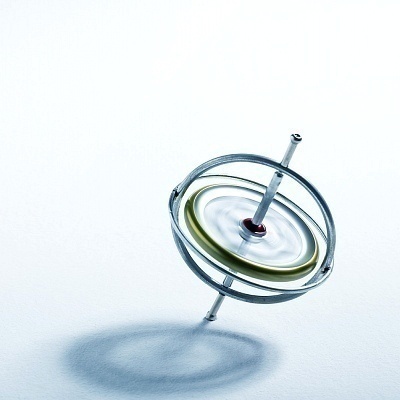What Are Gyroscopes?
Gyroscopes measure orientation, gain or maintain a specific orientation, and are based on angular momentum principles. Mechanical gyroscopes are typically made up of a spinning disk or wheel with an axle that can take any orientation. Large changes in angular momentum affect the axle more than the external torque’s effects due to the gyroscope spin’s high rate. Gyroscopes are commonly used to stabilize airplanes and helicopters, in ship navigation, naval weapons guidance systems, and tunnel mining. Modern gyroscopes can be linked to global positioning system-based devices in order to obtain an even higher degree of accuracy than when they were first invented.
Who Invented the Gyroscope?
The first person to name the gyroscope was French physicist, Leon Foucault, who was attempting to demonstrate the earth’s rotation. He mounted a rotor (a freely rotating disk in this case) on an axis that was spinning in the center of a large, stable wheel. The mounted wheel followed the earth’s rotation, demonstrating the earth’s spin. This experiment later evolved, allowing gyroscopes to aid ship and later aviation navigation.
How do Gyroscopes Work?
A modern gyroscope’s rotor is always spinning. This adds a number of properties to the device, which increases its usefulness since any change in orientation impacts all points on the rotor equally. The precession created from this phenomenon results in a fixed orientation, with the spinning rotor’s axis acting as a reference point for navigation. Today’s gyroscopes also have additional rings called gimbals in the middle of a single, larger, stable ring. These additional gimbals provide orientation on multiple axes, a task that traditional gyroscopes were incapable of.
Types of Gyroscopes
Mechanical Gyroscopes – These are the most common. They are used in navigation as well as children’s toys. The mechanical gyroscope is the noisiest type, however, and is slowly being phased out.
Gas Bearing Gyroscopes – In this type of gyroscope, pressurized gas suspends its rotor, which reduces the overall friction across the moving parts. These gyroscopes are some of the most accurate and NASA commonly uses them in space.


Comments - No Responses to “What Are Gyroscopes?”
Sorry but comments are closed at this time.